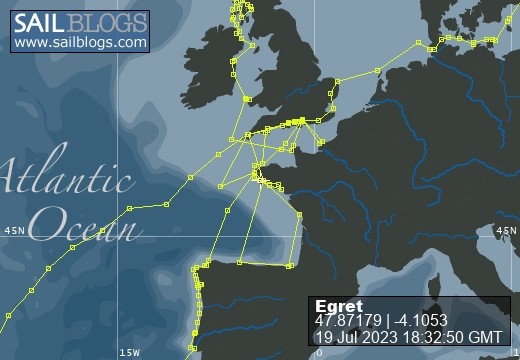
Egret
09 August 2022 | Picture: The Sunk Inner Light Vessel in the Thames Estuary
03 August 2022 | Egret at the Royal Norfolk and Suffolk Yacht Club, Lowestoft
23 July 2022 | Picture: One of the smaller locks at Holtenau
20 July 2022 | Picture: Patrick reminiscing with Juergen at Rostock
11 July 2022 | Picture: Egret at Stralsund, with the barque Gorch Fock beyond
04 July 2022 | Picture: Amanda on Bornholm
01 July 2022 | Picture: Kristianopol, with Egret at far right
26 June 2022 | Ernemar
19 September 2020 | Picture: Egret being lifted out at Ernemar, Sweden
08 September 2020 | Chart: our route from Mem into the Tjust Archipelago
01 September 2020 | Picture: the Carl Johans flight of seven locks
29 August 2020 | Picture: Egret (by G. Einefors)
27 August 2020 | Picture: Egret at Vadstena Castle
25 August 2020 | Picture: Norrkvarn Lock
23 August 2020 | Picture: Egret crossing Lake Vänern
19 August 2020 | Picture: Inside the lowest Trollhatte lock
17 August 2020 | Picture: The Gota Alv Bron in Gothenburg
16 August 2020 | Picture: the GKSS, Langedrag
13 August 2020 | Picture: Egret alongside (left) at Fisketangen
10 August 2019
129. An Island of Saints
07 April 2015
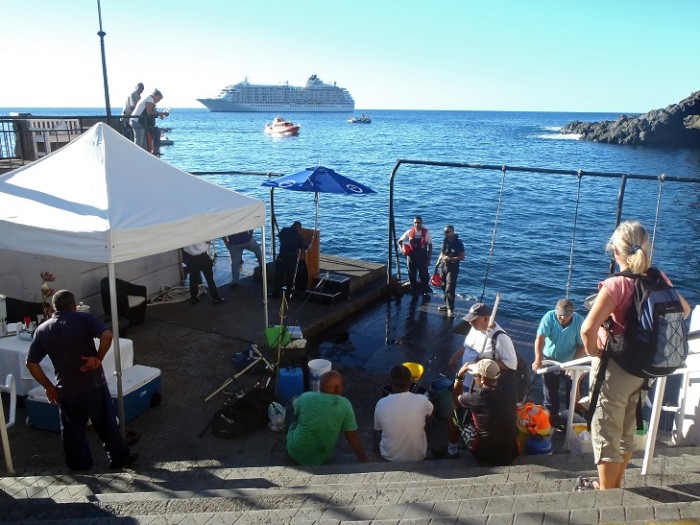
Boobies and red-billed tropic birds wheeled in front of the massive, forbidding cliffs that sheltered us from the prevailing wind. In either direction, deep V-shaped valleys notched into the hills, and at the nearest we glimpsed a few of the buildings of Jamestown. On every high point or promontory we could see the remains of old fortifications. We were moored amongst a dozen or so cruising yachts, and in front of the town were a number of work-boats, fishing boats and barges. Beyond the moorings lay "The World" at anchor, the cruise ship whose passengers own their suites of cabins as homes. We had last seen her in Vigo, Spain in 2011. We wondered at which other wonderful anchorages she had shared our experiences in the intervening years, at the same time contemplating how different their style of cruising must be to our own. We were taking stock of our new surroundings over a leisurely breakfast in the cockpit on our first morning at St. Helena.
The volcanic island, about nine miles by five, emerged as a hotspot near the Atlantic plate boundary about 14 million years ago. It lies isolated in the tropical belt of the South Atlantic Ocean, midway between Africa and South America. It was first discovered in 1502 by, like so many other places, a Portuguese sailor. Again, like so many other places, it was fought over by the Dutch, French and English, with the latter finally taking possession in 1659, which makes it one of Britain's oldest colonies. The anchorage was regarded as better than Cape Town's, which in any case was firmly held by the Dutch. The English East India Company was granted a charter by Cromwell to rule the island on England's behalf, responsible for maintaining a garrison and appointing a governor. British ships returning with goods from the Far East were required to rendezvous at St. Helena so that they could be escorted home in convoys by men-of-war. Settlers were enticed from Britain with land so that they could grow produce to re-provision the ships. The abundant potable water, fertile soil and temperate climate made it an ideal place to replenish supplies and refresh the sailors on the long voyage home. Captains found that men with scurvy and other ailments made rapid recoveries as soon as they were put ashore. Life was tough and justice rough for the settlers and even more so for the hundreds of African slaves which were brought to the island. However, after abolition in 1833, St. Helena contributed to the suppression of the illegal slave trade, by receiving and destroying arrested slave ships, and liberating the slaves. Workers were subsequently hired from Indonesia, India, China and Malaysia. Prosperity declined with the advent of steamships and the opening of the Suez Canal in 1869. Life became even more difficult for the islanders after the East India Company handed control back to the British Government in 1834, who promptly withdrew much of the financial support.
The island's inaccessibility leant itself to use as a prison for high profile captives, the most famous of course being Napoleon Bonaparte. He was exiled with some of his generals in 1815 after his defeat at Waterloo. The next important prisoner was the Zulu King Dinizulu, between 1890 and 1897. Unlike the sullen Emperor, he endeared himself to the islanders with his friendliness and adoption of fashionable European dress. The South African Boer General Cronje was held with 6,000 of his troops from 1900 to 1902, and the final captives were three Bahraini princes, held from 1957 to 1961. The island saw little action during the two World Wars, but the crew of the RMS St. Helena volunteered to man the ship to transport troops and supplies during the 1982 Falklands War. The current population of around 4,000 is an interesting mix of all these earlier inhabitants. They speak English of course, but at times this is blended with Creole and spoken with an almost incomprehensible drawl.
We had been asked to come ashore at 1100 to clear in to the country. We were picked up by an open launch which serves as a ferry. It is mainly for the local craft but also calls by the visitors' moorings on every hour during the day. We were greeted on the quayside by Steve, the Harbourmaster - an Englishman who had settled in St. Helena after marrying a 'Saint', as the islanders are known. He seems to have a busy job, particular with a cruise ship in port and the Easter holiday coming up, and he asked us to settle up with light dues and mooring fees another day. The Customs officers were all smiles, as were the Police who deal with Immigration. We felt as if we were almost home, seeing bobbies in their British uniforms and paying our entry fee in pounds. We had lunch at Anne's Place, which overlooks a pretty public garden and is decorated with burgees and ensigns from around the world: the haunt of present day visitors who reach St. Helena under sail. A plaque in the garden commemorates a lecture given by Joshua Slocum, the first single-handed circumnavigator, in 1898. We got back to the quay to find it crowded with islanders getting ready for an evening fishing expedition - a tradition for Maundy Thursday to provide fish for the following day's feast. Good Friday is one of the rare days that the ferry doesn't operate, but we were quite happy to have a relaxing day on board "Egret". We even went for a swim around the boat - our first for many months.
Jamestown was in a state of excitement on Easter Monday - The Royal Mail Ship "St. Helena" had arrived at anchor. This passenger cum cargo ship is the island's only regular link with the outside world. She sails from Cape Town to St. Helena, then on to Ascension Island and back via St. Helena to Cape Town, the round trip taking about three weeks. She was now on the return leg, carrying passengers who had either been working on Ascension or had travelled there in the civilian section of a military plane from RAF Brize Norton. She also carried cargo from the UK which had been brought to Ascension on a Royal Fleet Auxiliary ship. We watched as two flat-topped barges, a landing craft and a passenger launch shuttled across the waves between ship and shore, handled with impressive skill using practices developed over centuries. The barges were held off the quay by a cat's cradle of ropes, restrained from being bumped against the wall by the swell yet within reach of the hook of a big crawler crane. Most of the cargo was transferred in 20ft containers, but a couple of vehicles were delivered and swung ashore in slings with cargo nets under the wheels. There were emotional scenes as islanders returned after long periods abroad, whilst others waited to leave, including patients heading to Cape Town for specialist hospital treatment. Cabin and cargo rates on the RMS "St. Helena" are not cheap, which must make travel difficult to afford for the majority of islanders and is reflected by high prices for imported goods in the shops.
An airport is due to open in 2016 which will provide an air link with the U.K. and South Africa for the first time. It is certain to change life on the island. The expected air fares were announced while we were there, and, being considerably cheaper than those of the "St. Helena", the ship's future is likely to be in doubt. One wonders what the primary reason for building the airport really is. Is it our benevolent Government helping the islanders with easier travel, cheaper imports and opportunities for employment? Is it an ambitious business plan to develop tourism and a financial services industry? Or is it to provide a new strategic base in an ever threatening world? The Saints that we spoke to weren't too sure of the answer.
The volcanic island, about nine miles by five, emerged as a hotspot near the Atlantic plate boundary about 14 million years ago. It lies isolated in the tropical belt of the South Atlantic Ocean, midway between Africa and South America. It was first discovered in 1502 by, like so many other places, a Portuguese sailor. Again, like so many other places, it was fought over by the Dutch, French and English, with the latter finally taking possession in 1659, which makes it one of Britain's oldest colonies. The anchorage was regarded as better than Cape Town's, which in any case was firmly held by the Dutch. The English East India Company was granted a charter by Cromwell to rule the island on England's behalf, responsible for maintaining a garrison and appointing a governor. British ships returning with goods from the Far East were required to rendezvous at St. Helena so that they could be escorted home in convoys by men-of-war. Settlers were enticed from Britain with land so that they could grow produce to re-provision the ships. The abundant potable water, fertile soil and temperate climate made it an ideal place to replenish supplies and refresh the sailors on the long voyage home. Captains found that men with scurvy and other ailments made rapid recoveries as soon as they were put ashore. Life was tough and justice rough for the settlers and even more so for the hundreds of African slaves which were brought to the island. However, after abolition in 1833, St. Helena contributed to the suppression of the illegal slave trade, by receiving and destroying arrested slave ships, and liberating the slaves. Workers were subsequently hired from Indonesia, India, China and Malaysia. Prosperity declined with the advent of steamships and the opening of the Suez Canal in 1869. Life became even more difficult for the islanders after the East India Company handed control back to the British Government in 1834, who promptly withdrew much of the financial support.
The island's inaccessibility leant itself to use as a prison for high profile captives, the most famous of course being Napoleon Bonaparte. He was exiled with some of his generals in 1815 after his defeat at Waterloo. The next important prisoner was the Zulu King Dinizulu, between 1890 and 1897. Unlike the sullen Emperor, he endeared himself to the islanders with his friendliness and adoption of fashionable European dress. The South African Boer General Cronje was held with 6,000 of his troops from 1900 to 1902, and the final captives were three Bahraini princes, held from 1957 to 1961. The island saw little action during the two World Wars, but the crew of the RMS St. Helena volunteered to man the ship to transport troops and supplies during the 1982 Falklands War. The current population of around 4,000 is an interesting mix of all these earlier inhabitants. They speak English of course, but at times this is blended with Creole and spoken with an almost incomprehensible drawl.
We had been asked to come ashore at 1100 to clear in to the country. We were picked up by an open launch which serves as a ferry. It is mainly for the local craft but also calls by the visitors' moorings on every hour during the day. We were greeted on the quayside by Steve, the Harbourmaster - an Englishman who had settled in St. Helena after marrying a 'Saint', as the islanders are known. He seems to have a busy job, particular with a cruise ship in port and the Easter holiday coming up, and he asked us to settle up with light dues and mooring fees another day. The Customs officers were all smiles, as were the Police who deal with Immigration. We felt as if we were almost home, seeing bobbies in their British uniforms and paying our entry fee in pounds. We had lunch at Anne's Place, which overlooks a pretty public garden and is decorated with burgees and ensigns from around the world: the haunt of present day visitors who reach St. Helena under sail. A plaque in the garden commemorates a lecture given by Joshua Slocum, the first single-handed circumnavigator, in 1898. We got back to the quay to find it crowded with islanders getting ready for an evening fishing expedition - a tradition for Maundy Thursday to provide fish for the following day's feast. Good Friday is one of the rare days that the ferry doesn't operate, but we were quite happy to have a relaxing day on board "Egret". We even went for a swim around the boat - our first for many months.
Jamestown was in a state of excitement on Easter Monday - The Royal Mail Ship "St. Helena" had arrived at anchor. This passenger cum cargo ship is the island's only regular link with the outside world. She sails from Cape Town to St. Helena, then on to Ascension Island and back via St. Helena to Cape Town, the round trip taking about three weeks. She was now on the return leg, carrying passengers who had either been working on Ascension or had travelled there in the civilian section of a military plane from RAF Brize Norton. She also carried cargo from the UK which had been brought to Ascension on a Royal Fleet Auxiliary ship. We watched as two flat-topped barges, a landing craft and a passenger launch shuttled across the waves between ship and shore, handled with impressive skill using practices developed over centuries. The barges were held off the quay by a cat's cradle of ropes, restrained from being bumped against the wall by the swell yet within reach of the hook of a big crawler crane. Most of the cargo was transferred in 20ft containers, but a couple of vehicles were delivered and swung ashore in slings with cargo nets under the wheels. There were emotional scenes as islanders returned after long periods abroad, whilst others waited to leave, including patients heading to Cape Town for specialist hospital treatment. Cabin and cargo rates on the RMS "St. Helena" are not cheap, which must make travel difficult to afford for the majority of islanders and is reflected by high prices for imported goods in the shops.
An airport is due to open in 2016 which will provide an air link with the U.K. and South Africa for the first time. It is certain to change life on the island. The expected air fares were announced while we were there, and, being considerably cheaper than those of the "St. Helena", the ship's future is likely to be in doubt. One wonders what the primary reason for building the airport really is. Is it our benevolent Government helping the islanders with easier travel, cheaper imports and opportunities for employment? Is it an ambitious business plan to develop tourism and a financial services industry? Or is it to provide a new strategic base in an ever threatening world? The Saints that we spoke to weren't too sure of the answer.
Comments
| Vessel Name: | Egret |
| Vessel Make/Model: | Sweden Yachts 390 |
| Hailing Port: | Chichester Harbour |
| Crew: | Patrick & Amanda Marshall |
Egret's Photos - Main
R.jpg) |
The Gota River, Trollhatte Canal, Lakes Vanern & Vattern and the Gota Canal
2 Photos | 9 Sub-Albums
Created 30 September 2020
|
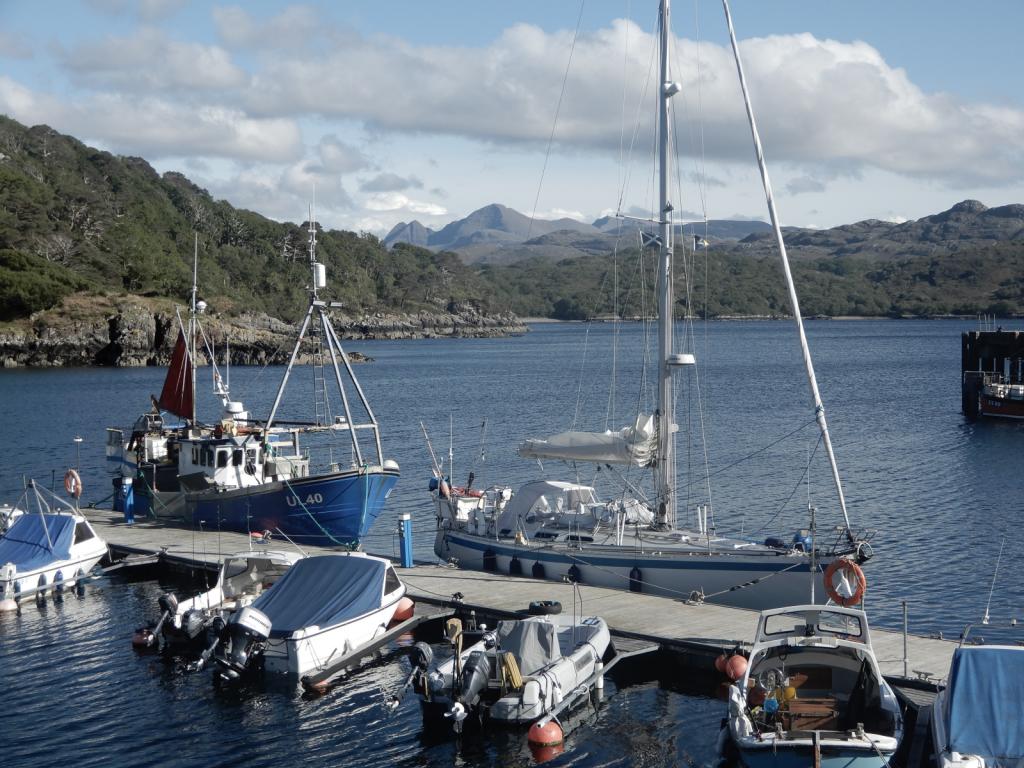 |
The Inner and Outer Hebrides, Orkney, Fair Isle, Shetland, Norway and Sweden's west coast.
1 Photo
Created 14 November 2019
|
|
Normandy, Scilly, Pembrokeshire, Ireland, Isle of Man, Northern Ireland, Inner Hebrides and the Crinan Canal.
1 Photo
Created 14 November 2018
|
Egret
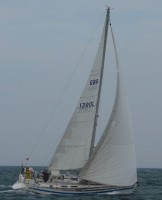
Who: Patrick & Amanda Marshall
Port: Chichester Harbour

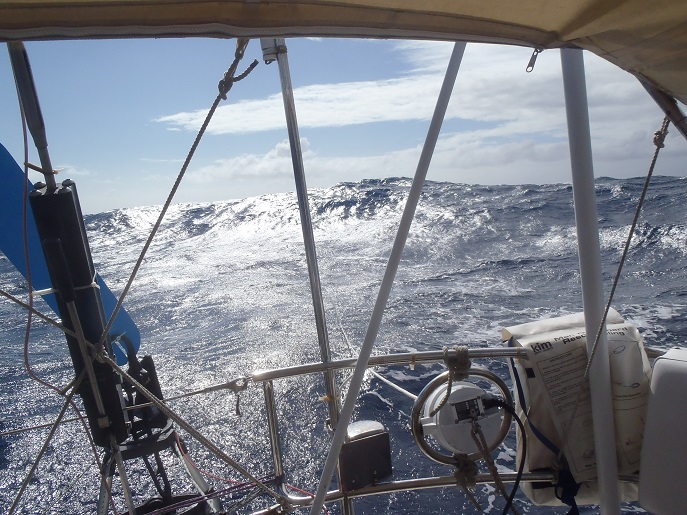
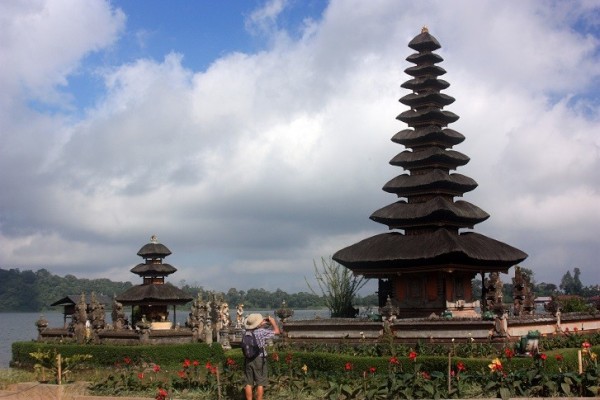
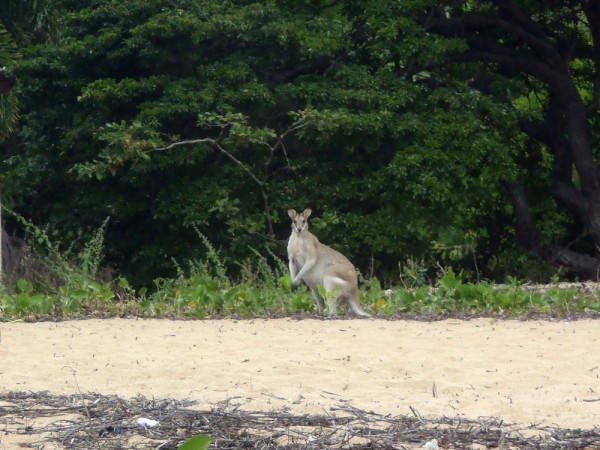
, Pentecost, Naghol (Land diving)a.jpg)
Amanda raising the Quarantine & New Zealand courtesy flagedit_edited-1 a.jpg)
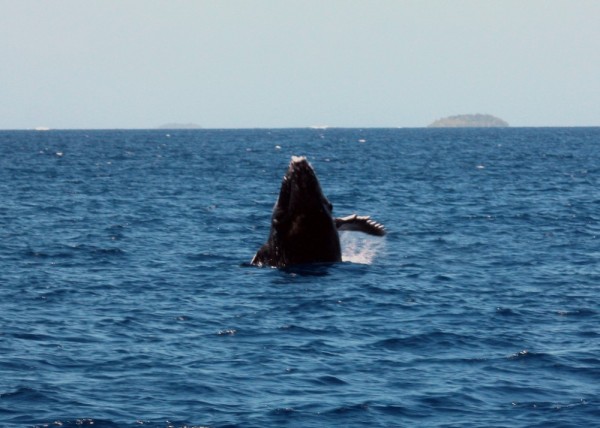
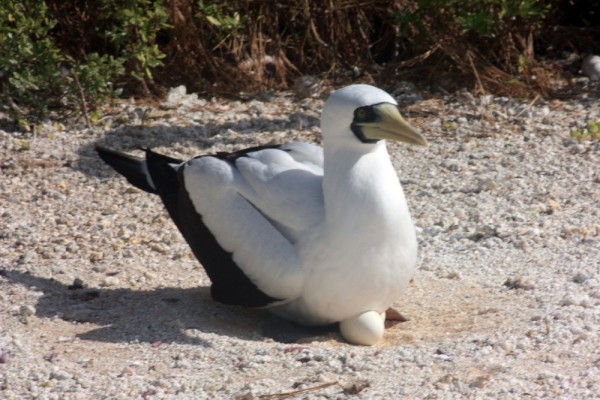
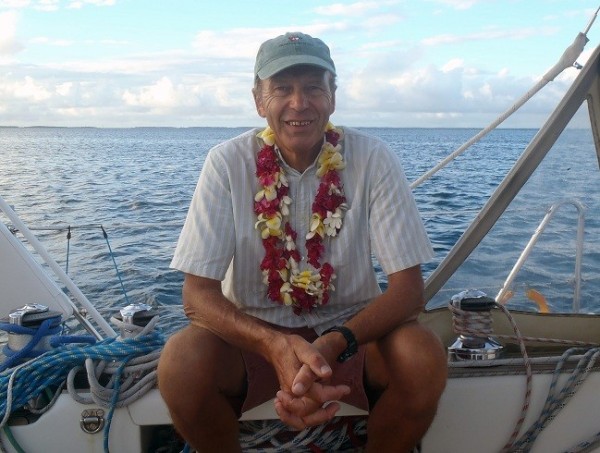
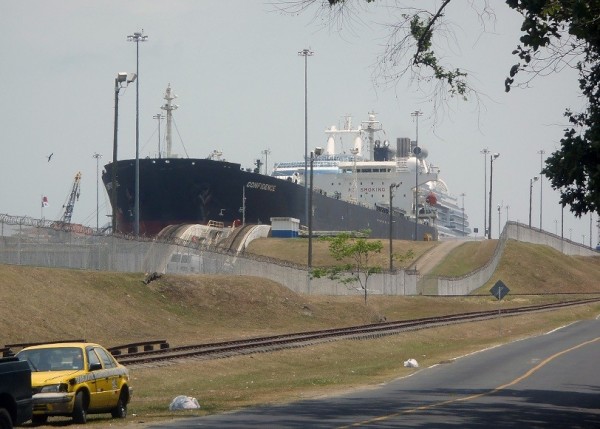
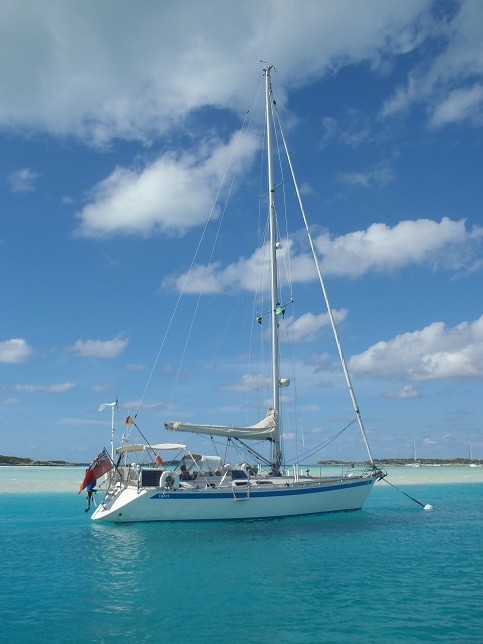
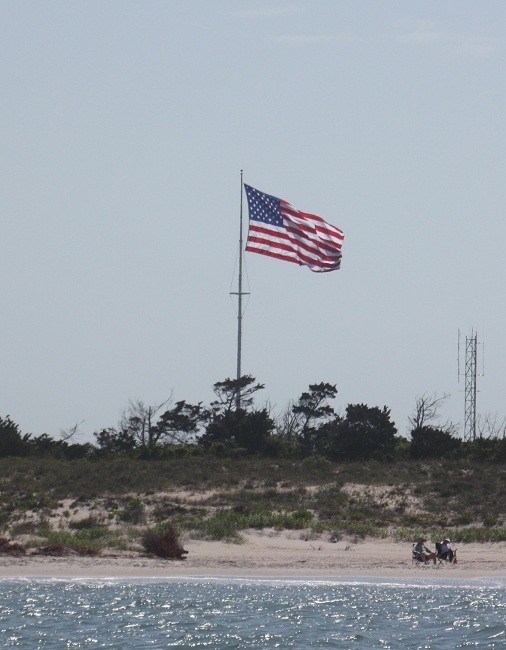
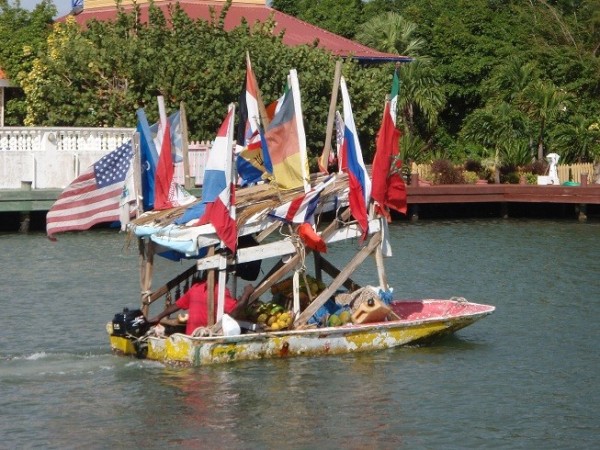


 Sir Edmund Hillary Alpine Centre a.jpg)


